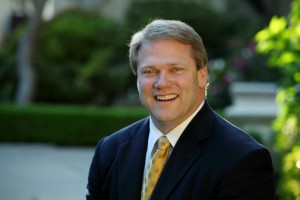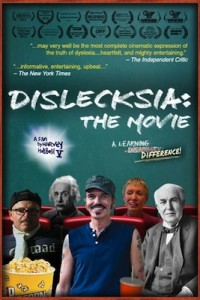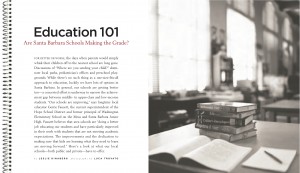
Gayle Beebe, courtesy Westmont College
When Gayle Beebe is inaugurated as the eighth president of Westmont College this weekend, he’ll speak on a subject dear to his heart: Global Education. But prior to that, he spoke to us about life at the college, his family, how he’s adapting to Santa Barbara, and Westmont’s facility upgrades.
LD: How did you end up in Santa Barbara?
GB: Years ago I was a consortium exchange student here … I really liked it and it really gave me a great vision for what my life could be. I never dreamed I would come back in this capacity, but quite a way down the road a position opened up. I was in a presidency at Spring Arbor University in Michigan. … I have always been kind of intrigued with Westmont, so it was just a great opportunity to serve others.
LD: Have you always felt you were called to academia?
GB: You know, not initially. I actually started out in ministry. I went to Princeton Theological Seminary after I was a student here and I was a pastor for five years …then did a dual degree in philosophy of religion and theology and business administration and strategic management at Claremont Graduate University.
… In 1992 I started working with Azusa Pacific University (as dean of the graduate school of theology) … that’s when I starting thinking academics and really enjoyed it a ton and then went from being a dean to being the president of Spring Arbor in 2000 and just enjoyed that kind of work.
LD: It’s interesting hearing about your background because it seems like a perfect fit for where you are now.
GB: Westmont has so many great strengths and first and foremost …it’s been a great experience, wonderful faculty, great students and a strong financial base. We need to strengthen the endowment but it’s strong. It’s a beautiful campus, with phase one construction coming, we’re excited to have an even more beautiful campus, great location, you know every constituent really loves Westmont. The community does, the board of trustees does, the alums do. … It’s just neat.
LD: So you’re in phase one of the construction?
GB: The beginning of that. We’re hoping to start construction this October and you know, there’s been litigation. We have a group that’s opposing us and we’re just working through all of that.
LD: Is it basically a facility upgrade as opposed to an expansion?
GB: We are not allowed to add any students. It is truly an effort to get a state-of-the-art campus. It’ll be marvelous but there is no interest, no conversation about raising the enrollment to above 1,200. I would like to long-term see us strengthen our global program because we have had some really unique distinct global programs and I’d just like to see us build those out more, but in terms of what happens in Montecito, we have 1,200 students.
LD: Assuming the lawsuit gets resolved, what visible changes will we be able to see on campus in the near future?
GB: We would like to get Adams Center for visual arts, our art program and studio. There will be a new chapel, the observatory, and a hall for math and science. Those will be additions. And then we’ll also be adding a dorm. We have a couple hundred students right now in triples and so we want to build an additional dorm so that we can have students housed in more conventional two to a room.
LD: Do all the students live here?
GB: Yes, they do. It’s one of our five planks in the mission statement … That residential piece I think is just so critical, it’s really important that the faculty live near the students so that they can have not just the contact during class but the informal contact with them away from class.
LD: Since you’ve taken over at the college, what’s been your biggest surprise so far?
GB: You know there’s no earth shattering surprises. The biggest surprise has been all of the conditions with phase one construction. I believe there are 116 conditions and it’s the way that they work out with each other. …They didn’t all get negotiated at once; they got negotiated over a seven-year period. I mean it’s a true act of perseverance that we got to this point.
LD: Do you have is there a facilities manager that oversees this?
GB: Yes, Randy Jones is our campus architect. The people who were here, Stan Gaede was the president and Ron Cronk was the VP of Finance. Ron really ran point on this and really shepherded it. Cliff Lundberg, the executive vice president has been deeply involved in it and Cliff is still here, and then my new VP of finance, Doug Jones, has really taken major responsibility for the operation of phase one. Doug came with me from Michigan. He’s just a brilliant, guy, great judgment, really hard worker.
LD: That’s a big project to take on.
GB: It is. We did a ton of building at Spring Arbor, we added 14 new buildings and remodeled 11 others and Doug oversaw all of those.
LD: Other than this the construction, what do you see as your biggest challenge?
GB: Every place has unique challenges and I think that there’s no reason to overreact … I think what we have to do is figure out how we’re going to space this so we have enough time to give us the biggest opportunity of raising the money we need and not for so long that one of the problems with building is you get inflation. If you don’t start building, eventually you lose so much from year to year that you will never catch up.
LD: It sounds like you’re very busy working, but what else do you like to do when you’re not working?
GB: Well I love being with my family, my children and being part of their sports and their academics, along with my wife. We enjoy going to the movies and I enjoy golfing. I enjoy going to the beach. … If I can find an excuse to drive Cabrillo along the beach from downtown I will, because I just love driving even that little stretch of East Beach. It’s just so inspiring.
LD: Is there sort of a first lady role for your wife at Westmont?
GB: There is and she helps and is the presence of the college at different events and on boards and committees. That hasn’t started in a huge way yet, but by the time we were done in Michigan that was a huge part of her job. I know her time here will continue to become more and more committed. It’s been great to have her more available this first year. She does a great job and to my benefit she just loves family and she’s great with people. People just love her and she’s great with them.
LD: If you could pick three adjectives to describe yourself, what would they be?
GB: Energetic, fun loving and determined.
LD: If you could be invisible anywhere in Santa Barbara, where would you go and what would you do?
GB: I would probably go to East Beach and read a book
Vital Stats: Gayle Beebe
Born: Born and raised in Eugene, Oregon.
Family: Wife Pam; children Anna, age 15; Elizabeth (Liz), age 13; and Richard (Ricky), age 9.
Civic Involvement: The Channel Club, Santa Barbara Partners in Education.
Professional Accomplishments: President of Westmont College; former President of Spring Arbor University; former Dean of the graduate school of theology at Azusa Pacific University.
Little Known Fact: “I played the cello for seven years, I also play the piano.”
Originally published in Noozhawk on April 7, 2008






 “Santa Barbara is a high cost-of-living town and being a student at City College— no matter how affordable the education itself— is even more challenging,” Sjerven says. “My long-term vision is to see enough financial aid available so that each and every student in the Culinary Arts program can receive tuition assistance to some degree. To that end I challenge every Santa Barbara restaurant that has ever had a student or graduate of the program in their kitchen to create a scholarship. Our community provides unlimited possibilities to give but here is a meaningful way to give back directly to the institution that provides so many staff for so many of our local restaurants.”
“Santa Barbara is a high cost-of-living town and being a student at City College— no matter how affordable the education itself— is even more challenging,” Sjerven says. “My long-term vision is to see enough financial aid available so that each and every student in the Culinary Arts program can receive tuition assistance to some degree. To that end I challenge every Santa Barbara restaurant that has ever had a student or graduate of the program in their kitchen to create a scholarship. Our community provides unlimited possibilities to give but here is a meaningful way to give back directly to the institution that provides so many staff for so many of our local restaurants.”





